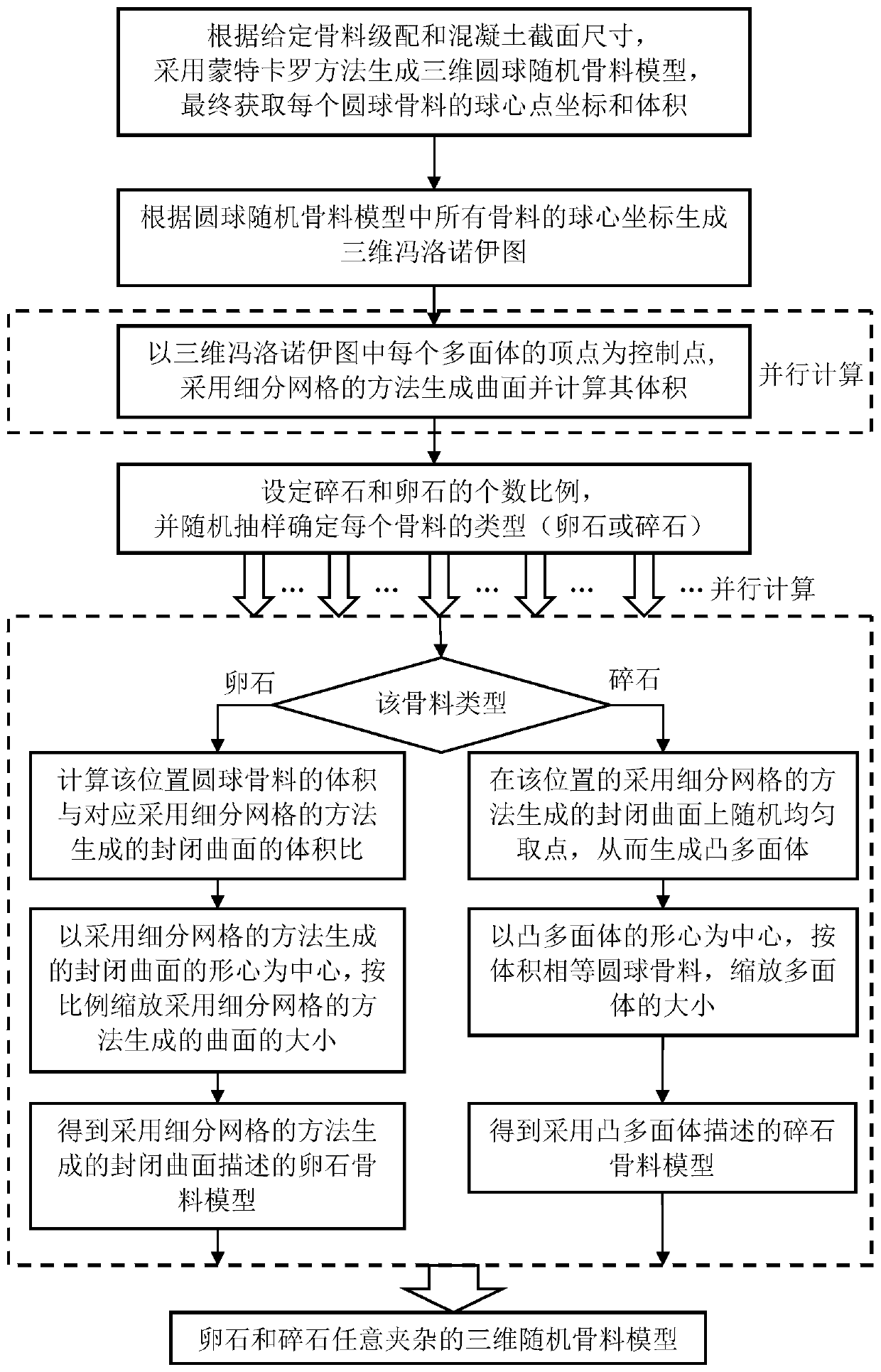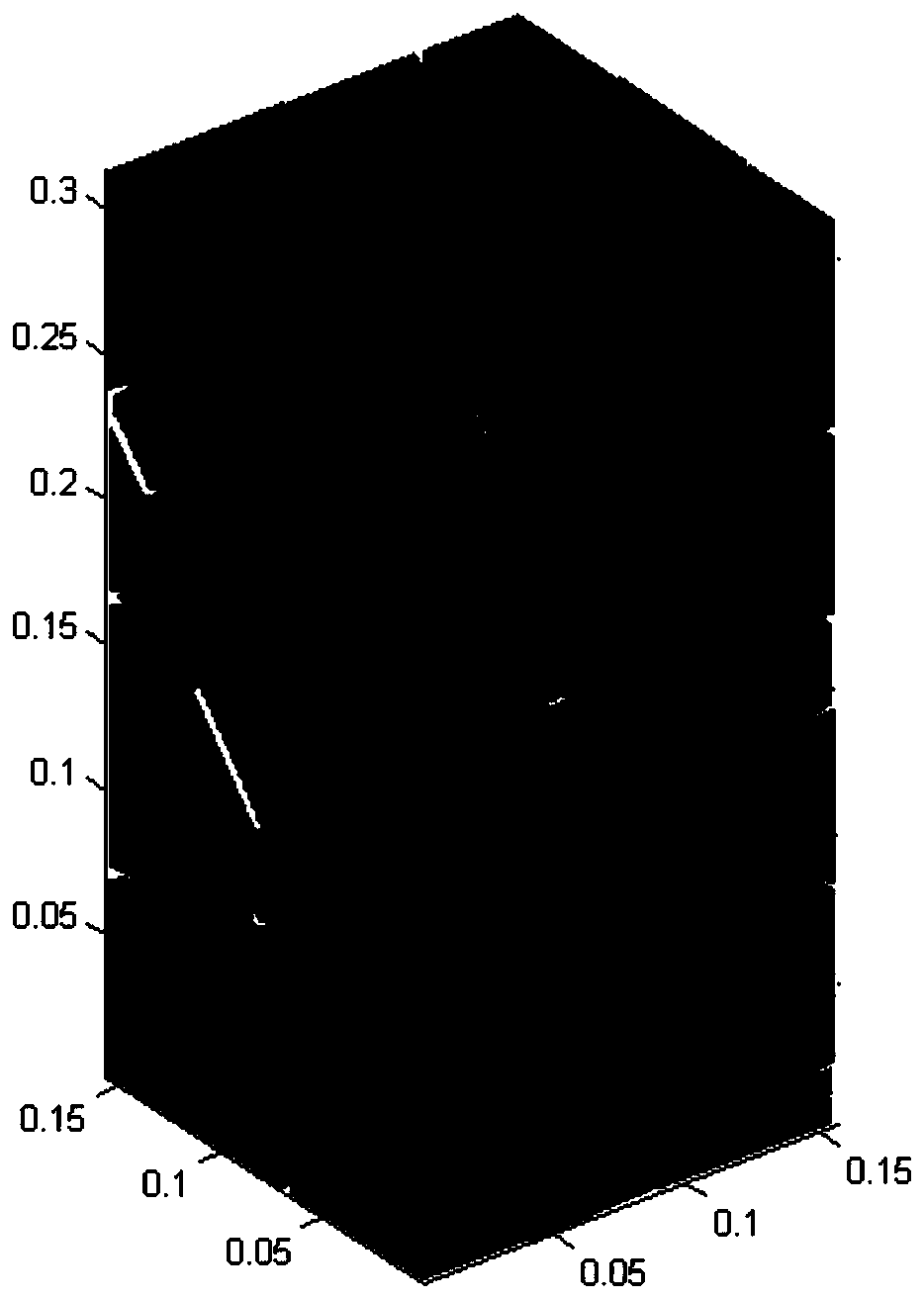Method for Rapidly Generating 3D Random Aggregate Model of Concrete with Pebbles and Crushed Stones
A concrete and aggregate technology, applied in 3D modeling, instrumentation, design optimization/simulation, etc., can solve problems such as long calculation time and difficulty in parallel processing, and achieve short calculation time, realistic shape of aggregate, and low investment low cost effect
- Summary
- Abstract
- Description
- Claims
- Application Information
AI Technical Summary
Problems solved by technology
Method used
Image
Examples
Embodiment 1
[0034] The purpose of this embodiment is to generate a three-dimensional random aggregate model of concrete with only pebbles, which belongs to a special case of the method of the present invention.
[0035] 1. According to the given aggregate grading and concrete cross-sectional size, the aggregate grading is two grades, the aggregate particle size range is 5~20mm and 20~40mm, and the concrete cross-sectional size is 0.15m×0.15m×0.30m , use the Monte Carlo method to generate a three-dimensional spherical random aggregate model diagram, and finally obtain the coordinates and volume of the center point of each spherical aggregate, see figure 2 , the number of spherical aggregates is 80;
[0036] 2. According to the spherical center coordinates of all aggregates in the spherical random aggregate model diagram, generate a three-dimensional von Lonoi diagram with boundaries, see image 3 ;
[0037] 3. Take the vertices of each polyhedron in the 3D von Loneuyi diagram as the con...
Embodiment 2
[0041] The purpose of this embodiment is to generate a three-dimensional random aggregate model of concrete with only gravel, which belongs to another special case of the method of the present invention.
[0042]1. According to the given aggregate grading and concrete cross-sectional size, the aggregate grading is two grades, the aggregate particle size range is 5~20mm and 20~40mm, and the concrete cross-sectional size is 0.15m×0.15m×0.30m , use the Monte Carlo method to generate a three-dimensional spherical random aggregate model diagram, and finally obtain the coordinates and volume of the center point of each spherical aggregate, see figure 2 , the number of spherical aggregates is 80;
[0043] 2. According to the spherical center coordinates of all aggregates in the spherical random aggregate model diagram, generate a three-dimensional von Lonoi diagram with boundaries, see image 3 ;
[0044] 3. Take the vertices of each polyhedron in the 3D von Loneuyi diagram as the...
Embodiment 3
[0048] The purpose of this embodiment is to generate a concrete three-dimensional random aggregate model mixed with pebbles and crushed stones, which belongs to the conventional situation of the method of the present invention.
[0049] 1. According to the given aggregate grading and concrete cross-sectional size, the aggregate grading is two grades, the aggregate particle size range is 5~20mm and 20~40mm, and the concrete cross-sectional size is 0.15m×0.15m×0.30m , use the Monte Carlo method to generate a three-dimensional spherical random aggregate model diagram, and finally obtain the coordinates and volume of the center point of each spherical aggregate, see figure 2 , the number of spherical aggregates is 80;
[0050] 2. According to the spherical center coordinates of all aggregates in the spherical random aggregate model diagram, generate a three-dimensional von Lonoi diagram with boundaries, see image 3 ;
[0051] 3. Take the vertices of each polyhedron in the 3D v...
PUM
 Login to View More
Login to View More Abstract
Description
Claims
Application Information
 Login to View More
Login to View More - R&D
- Intellectual Property
- Life Sciences
- Materials
- Tech Scout
- Unparalleled Data Quality
- Higher Quality Content
- 60% Fewer Hallucinations
Browse by: Latest US Patents, China's latest patents, Technical Efficacy Thesaurus, Application Domain, Technology Topic, Popular Technical Reports.
© 2025 PatSnap. All rights reserved.Legal|Privacy policy|Modern Slavery Act Transparency Statement|Sitemap|About US| Contact US: help@patsnap.com



